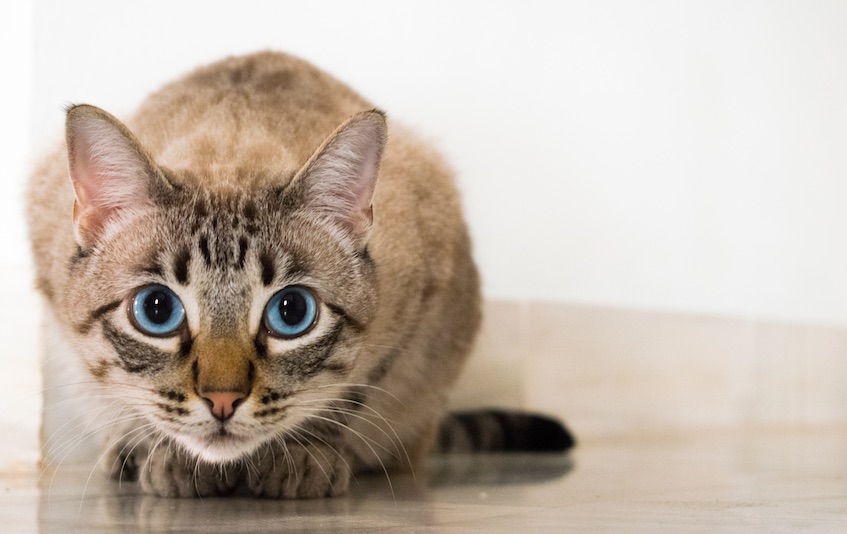According to the American Association of Feline Practitioners (AAFP), 83% of cat owners bring their cat to a veterinarian before its first birthday, but over 50% don’t return until an obvious health problem arises much later in life. So, what’s the animal health industry to do about this problematic health care gap?
Enter National Take Your Cat to the Vet Day—an awareness campaign celebrated annually on August 22nd to engage and educate cat owners about the importance of preventive care for cats.
In honor of #Cat2VetDay, LifeLearn’s Chief Veterinary Officer, Dr. Mark Stephenson recently sat down with Dr. Jane Brunt, Executive Director of the CATalyst Council and former AAFP president, to discuss the nuances of cat health and the myriad of ways this initiative helps improve the welfare of pet cats everywhere.
Here’s how your practice can help encourage pet owners to seek routine veterinary care for their feline friends this National Take Your Cat to the Vet Day—and beyond!
Educate cat owners on cat health and preventive care
Far too often, cats do not receive essential medical care because their owners don’t understand the importance of routine veterinary visits.
“I think there’s this general misunderstanding that cats can get away with not having veterinary care,” says Dr. Stephenson. “So how can you begin to educate pet owners on cat health if they aren’t even coming to your clinic? Take Your Cat to the Vet Day is a great place to start.”
“It’s a call to action,” says Brunt. “So many potential health issues require that the pet owner is educated—and it has to start outside the veterinary office through industry-wide outreach with our affiliated channels, local shelters, and even preventive companies to show pet owners the real benefit of medical care that only a veterinarian can provide.”
By sharing trusted educational content on your website, via social media channels, and even within local news outlets, you can help equip pet owners with strategies to simplify each visit to your practice. From there, clients will be more receptive to learning about year-round preventive care and how to spot common signs of illness unique to cats.
Go cat-friendly—help make vet visits less stressful
Unfortunately, veterinary appointments can be traumatic for cats and cat parents alike. National Take Your Cat to the Vet Day, therefore, is about so much more than that first initial visit—how do we keep them coming back?
According to Brunt, “encouraging more pet owners to bring their cats to the vet requires that we simplify the process.”
A recent Banfield State of Pet Health Report found that 66% of cat owners claim they would take their cat to the veterinarian more often if the process were made easier. There are a variety of strategies your practice can try to make that happen, like providing cat soothing kits, offering cat-only appointment windows, or registering as a Cat Friendly Practice with the AAFP.
“We’ve progressed in the last number of years towards understanding the importance of keeping cats as comfortable as possible, “says Dr. Stephenson, “such as what to do at home, during travel, and at the practice. So, we need to pre-educate people on that whole experience. That way, we can prevent a poor first impression, or replace any negative experience with a positive one to help them see veterinary care differently.”
Emphasize the client-cat bond to engage pet owners emotionally
To truly help pet owners see veterinary care differently, animal care teams must also find new ways of approaching pet health—especially when it comes to cats. Forming an emotional bond with the cat and the client, says Brunt, could be the key to that paradigm shift.
“As a veterinary community, we tend to dive into the medical stuff, but pet owners may not see the inherent value in that,” says Brunt. “When you celebrate that relationship piece and reinforce those positive, emotional elements, the caregiver can recognize the full value of cats and better appreciate the need for routine vet care.”
Using the fun stuff like creating a cat-stimulating environment or teaching pet owners about a cat’s play and prey needs, you gain an opportunity to emphasize the medical needs of the cat. When you make the medicine relevant to the needs and desires of the cat owner, you’re more likely to cultivate lifelong clients. Lifelong clients make better pet parents—and better cat owners raise happier healthier cats.
Ultimately, that’s why days like National Take Your Cat to the Vet Day exist—to advocate for the health, welfare, and value of companion cats everywhere.






